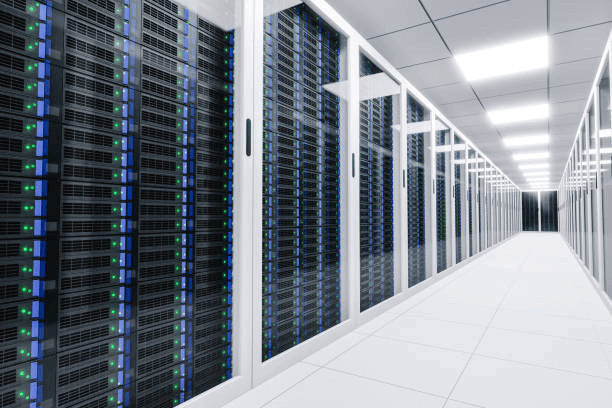5 Main Elements to Consider When Designing A Data Center

Contents [Show]
A data center homes the vital IT infrastructure that powers our digitally linked world, serving as the nerve center for today’s businesses. Massive volumes of data are processed, saved, and distributed over this intricate network of computers, networking hardware, and storage. But what are the main elements to consider when designing a data center?
The process of designing a data center is elaborate and includes several important additives that need careful consideration. Everything from the bodily design to electricity performance, protection necessities, and scalability issues is crucial to ensure a strong and reliable operation.
As technology advances and demands on data centers rise, it becomes more critical than ever for anybody concerned in IT and infrastructure planning to apprehend those important components. The 5 important elements that need to be considered while building a data center will be mentioned in the ensuing sections, along with how each affects an effective and adaptable setup.
Connectivity and Network Design
In a data center, connectivity serves purposes beyond simple communication. It all comes down to selecting proper data center switches to deliver unbroken, high-speed data flow. Also, multiple network channels lower the likelihood of downtime caused by a single point of failure. To ensure high availability, this should be given top priority in every data center.
Since a company’s need for data expands, consider the current and projected demands on data transmission. When designed with proper foresight, network infrastructure can withstand increasing demands without undergoing disruptive overhauls.
Finally, cabling encompasses more than just equipment connections. It is a performance-influencing strategic design element. Structured cabling solutions offer excellent data transmission speeds and an efficient cable management system.
Security and Access Control
The sanctity and security of a data center are paramount, intertwining both physical and cyber domains. At the physical level, a data center’s integrity relies on tangible countermeasures. This includes perimeter defenses such as reinforced walls, fencing, and CCTV cameras.
Further, biometric access controls—like fingerprint or retinal scanners—ensure that only allowed personnel can breach the inner sanctum of the server rooms. Hence, it adds layers of fortification against unauthorized intrusions.
The data center’s electronic fortifications are just as crucial on the cyber front. Firewalls are the primary gatekeepers. They scrutinize inbound and outbound traffic to prevent malicious incursions. Complementing these are intrusion detection and prevention systems (IDPS).
These continually watch network traffic for anomalous patterns, signaling potential cyber-attacks. Regular security audits, a vital practice, ensure the detection of vulnerabilities and reinforce the center’s digital defense mechanisms.
Infrastructure and Facility Design
The backbone of any data center infrastructure design revolves around a few core components. First up is cooling. As servers tirelessly crunch data, they emit substantial heat. Also, equipment could overheat without a robust cooling system, like hot/cold aisle containment or advanced liquid cooling solutions, leading to performance issues or outright failures.
Next, we touch upon power. It’s not just about having enough electricity; it’s about ensuring uninterrupted supply. Think of redundant power sources as the backup singers, waiting to take center stage should the main act falter. Incorporating UPS systems and backup generators isn’t just a good idea; it’s necessary.
Finally, there’s the matter of space. It’s more complex than stacking servers. Proper rack layout ensures efficient airflow, eases maintenance, and provides room to grow. Planning for today is good, but designing for tomorrow’s expansion is visionary.
So, infrastructure design is a delicate dance of temperature, power, and space. Quite the technical ballet, wouldn’t you say?
Monitoring and Management
In contemporary data center architecture, vigilant monitoring and adept management underpins operational efficiency and uptime assurance. Central to this is deploying Data Center Infrastructure Management (DCIM) systems. These sophisticated tools offer granular insights into diverse parameters, ranging from power consumption metrics to the intricacies of equipment health.
Another cornerstone in this domain is environmental monitoring. Integrating advanced sensors that vigilantly track temperature fluctuations, humidity levels, potential water ingress, and fire threats provides an early warning mechanism. Such a mechanism ensures the safety of the equipment and the data housed within it.
To complement these, remote management capabilities are indispensable. Leveraging tools that facilitate server oversight from afar, data center personnel can execute troubleshooting procedures.
Scalability and Flexibility
Because the panorama of data centers is constantly evolving, a forward-thinking design that puts scalability and flexibility first is needed.
It is crucial to construct data centers using a modular architecture. This technique divides the facility into standardized parts, allowing for incremental growth. Extra modules can be effortlessly delivered as data needs boom, saving money on capital expenditure.
Also, it ensures that the center will remain flexible enough to satisfy operational desires without frightening the current configuration.
More critically, it is vital to expect technological advancements. A nicely designed data center must accommodate those innovations, from converting storage methods to next-generation server architectures. If the facility cannot change, it could become inefficient and obsolete in terms of generation.
Subsequently, records facilities must be organized for the cloud because of the speedy growing enterprise of cloud computing. A records center that integrates cloud platforms with on-premises infrastructure through hybrid architectures can gain the cloud’s flexibility. It maintains on-premises control simultaneously, creating a technically harmonious placement.
Conclusion
When designing a data center, you must prioritize infrastructure, security, network robustness, and vigilant monitoring. Also, you must leverage modular structures and expect changes in technology. All these increases operational efficiency and ensure long-term sustainability.


0 Comments